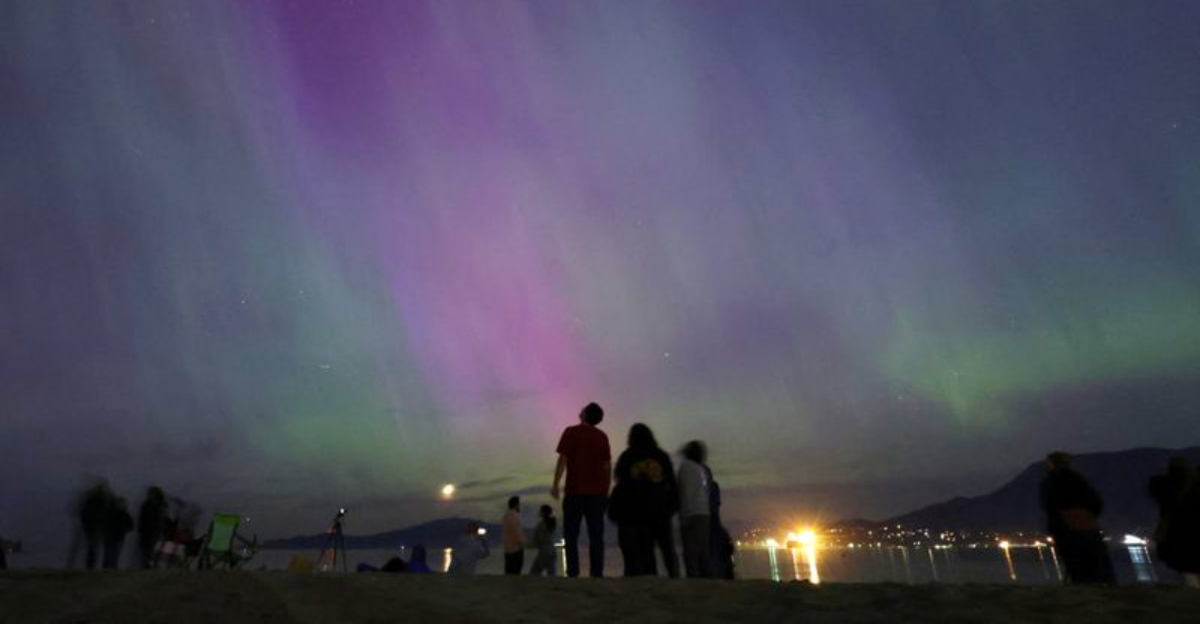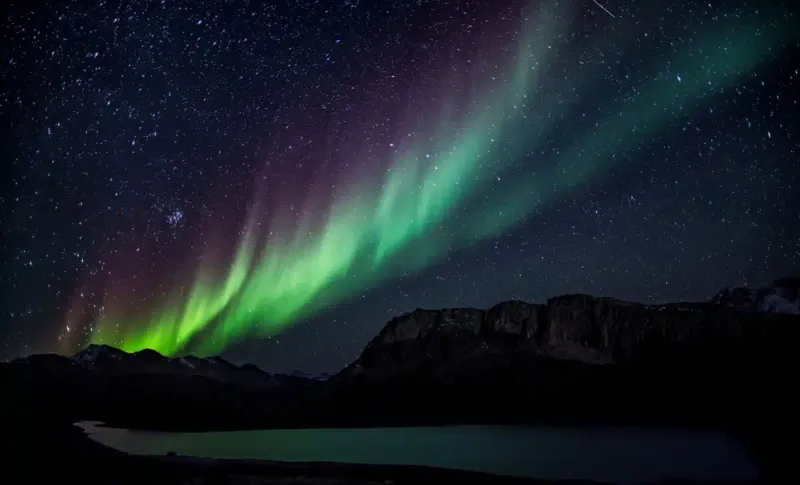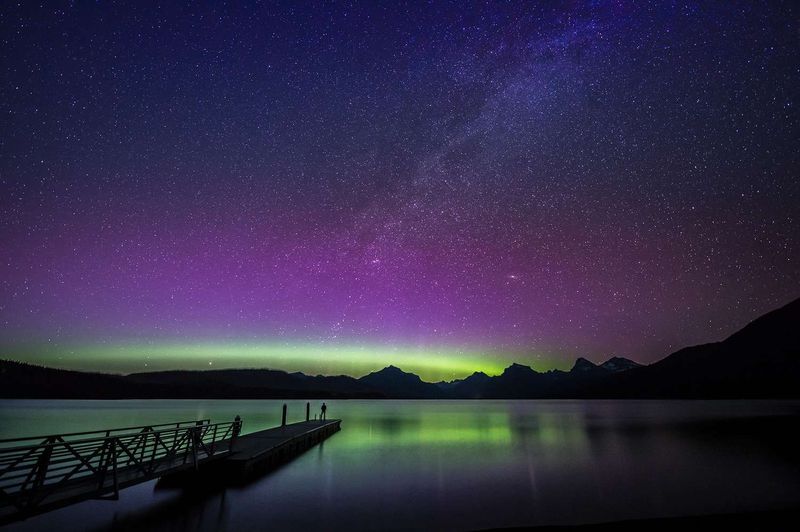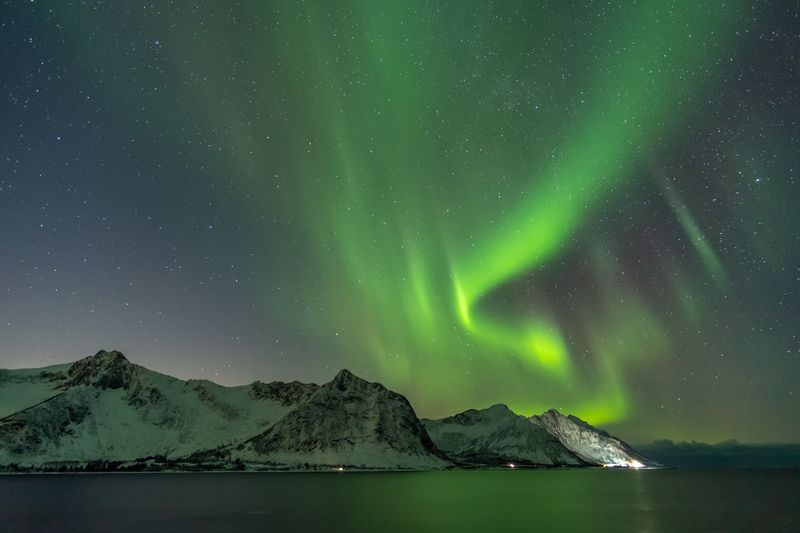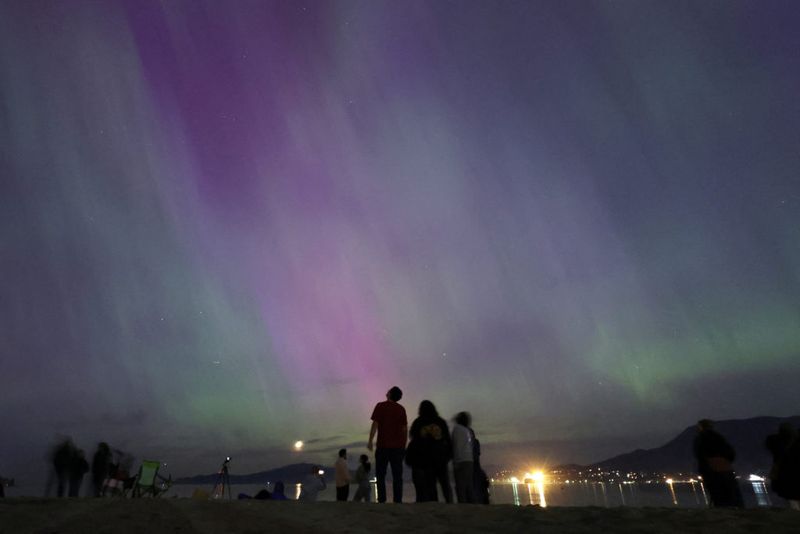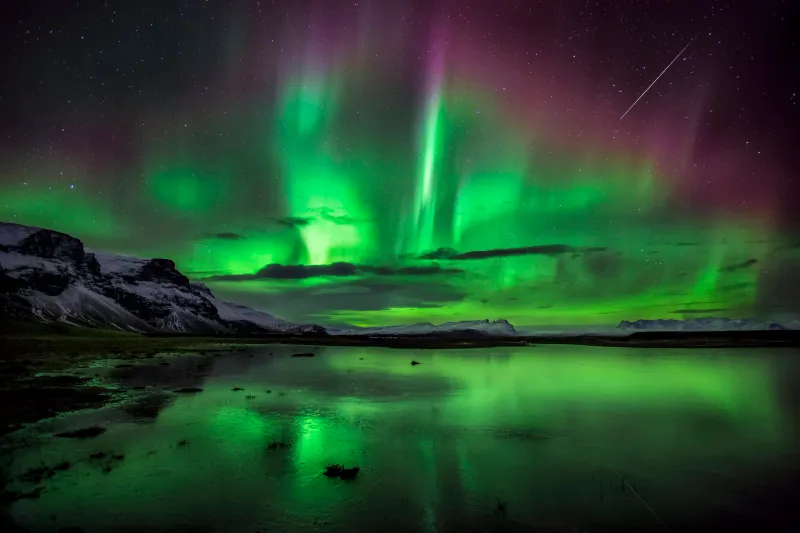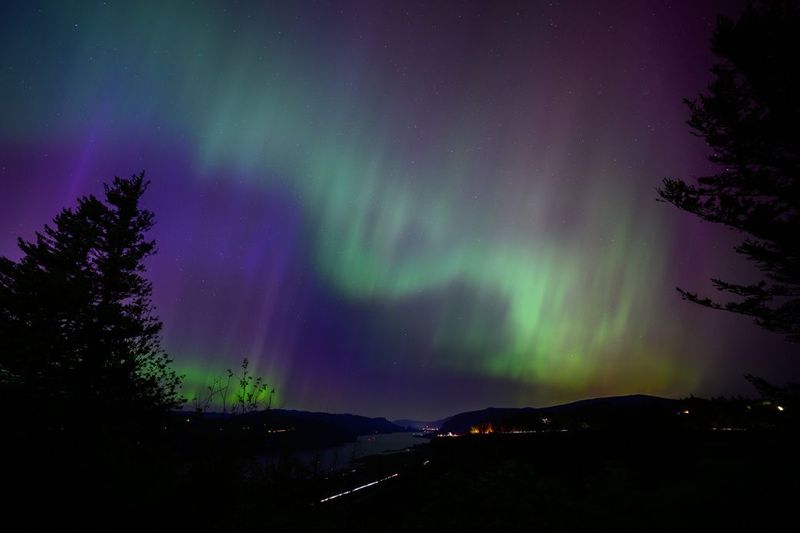Tonight could be one of those magical evenings when the night sky puts on a dazzling light show, and you might not even need to travel to Alaska to see it. A powerful geomagnetic storm is expected to push the Northern Lights far enough south that up to 15 states across the country could witness the shimmering green, purple, and red curtains of light dancing overhead. Thanks to the sun entering its most active phase, these aurora displays are becoming more frequent and more spectacular, giving skywatchers from Washington to Maine a rare chance to experience one of nature’s most breathtaking phenomena right in their own backyards.
A Rare Celestial Show Across 15 States
Something extraordinary is brewing in the sky tonight. A geomagnetic storm is forecast to push the auroral oval—the ring-shaped zone where auroras typically occur—much farther south than usual. That means the Northern Lights could be visible across up to 15 U.S. states, a phenomenon that doesn’t happen every day.
According to NOAA forecasters, solar particles are colliding with Earth’s magnetic field in just the right way to energize auroras over regions that rarely see them. These aren’t your typical high-latitude haunts near the Arctic Circle.
With the sun currently in solar maximum, its most active phase in the 11-year cycle, the chances of vivid aurora displays have skyrocketed. More solar flares and coronal mass ejections mean more opportunities for stunning light shows, making tonight especially promising for skywatchers across the continental U.S.
States with the Best Odds
Alaska remains the undisputed champion when it comes to aurora visibility, where the lights dance overhead on most clear nights during geomagnetic activity. If you’re in the Last Frontier, your odds are nearly guaranteed tonight.
Other states with moderate to excellent potential include Washington, Idaho, Montana, North Dakota, Minnesota, Michigan, Wisconsin, and Maine. Residents in these areas should prepare for a possible show if skies remain clear and light pollution stays minimal.
Meanwhile, Wyoming, South Dakota, Iowa, New York, New Hampshire, and Vermont also fall within the viewline, though visibility there depends heavily on local conditions. Cloud cover, ambient light, and the storm’s exact intensity will determine whether the auroras make an appearance. Even if you’re on the southern edge of the forecast zone, it’s worth stepping outside and looking north—you might just catch a glimpse of shimmering color.
Timing and Viewing Window
Patience pays off when chasing auroras. The best times to catch the lights are between 10:00 p.m. and 2:00 a.m. local time, when geomagnetic activity typically peaks and the sky reaches its darkest point.
As Earth rotates into the path of incoming solar particles, that late-night window often provides the clearest shot at witnessing the phenomenon. Your eyes need time to adjust, so give yourself at least 20 minutes in the dark before expecting to see anything spectacular.
Skies must be dark and free of interference from the Moon or city lights to maximize visibility. Even a bright Moon can wash out the fainter greens and purples of the aurora. Check your local weather forecast for cloud cover and consider driving away from urban areas to find the darkest skies possible for an unforgettable viewing experience tonight.
Why It’s Happening: Solar Activity and Magnetic Disturbance
Ever wonder what makes the auroras glow? This event is driven by a stream of charged solar particles, known as solar wind, along with a past coronal mass ejection that have disturbed Earth’s magnetosphere. Think of it as the sun sending a wave of energy our way.
The sun is currently in solar maximum, a phase in its 11-year cycle when sunspots, flares, and eruptions become more frequent and intense. This increases both the frequency and strength of geomagnetic storms that trigger auroral displays.
When energetic particles funnel into Earth’s magnetic field near the poles, they collide with gases in the upper atmosphere—primarily oxygen and nitrogen—and excite them. This collision releases energy in the form of light, creating the shimmering curtains of green, red, and purple that we call the Northern Lights. It’s a beautiful dance between the sun and Earth.
Tips to Boost Your Chances
Want to maximize your odds of catching the show? Head to a high vantage point with a clear view north and minimal light pollution. Parks, rural fields, or lakeshores away from cities work best.
Use aurora forecast apps or NOAA’s space weather alerts to track real-time Kp index levels and geomagnetic activity. These tools can give you advance warning when conditions become favorable, so you’re not just guessing.
Bring a tripod, set your camera for long exposure—around 10 to 20 seconds—and let your eyes adapt to darkness for at least 20 minutes before expecting to see anything. Your smartphone camera might pick up colors your eyes can’t detect right away. Dress warmly, bring snacks, and be patient. Aurora hunting is as much about the experience as it is about the spectacle itself.
What Makes This Event Special
Aurora displays reaching 15 states are uncommon, especially outside Alaska and the far northern tier. Most of the time, you’d need to travel to Canada or Scandinavia to witness such a spectacle, making tonight’s forecast genuinely exciting.
This event underscores how solar maxima and geomagnetic storms can push auroral visibility far beyond its usual boundaries. It’s a reminder of how dynamic and interconnected our planet is with the sun’s activity.
For many skywatchers, this is one of those rare nights when the aurora might light up skies deep in the continental U.S.—a moment where science, spectacle, and cosmic dynamics converge. Whether you’re a seasoned aurora chaser or a curious beginner, tonight offers a front-row seat to one of the universe’s most captivating performances. Don’t miss it.
